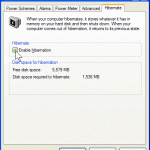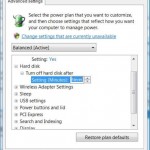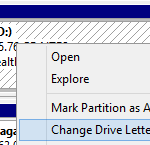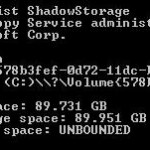After installing and running Windows operating such as Windows Vista, Windows 7, Windows 8, Windows 8.1 or Windows 10, a lot of users probably notice that the hard disk activity by Windows operating system is enormous, and probably unbelievable to say the least. The hard disk activity, which normally can be monitored via hard disk LED on computer’s casing, will show almost non-stop continuing operating, with LED blinks non-stop. Frequent hard disk I/O read/write activity by Windows will undoubtedly reduce system performance.
Why is Windows system always accessing and writing or reading from HDD drive? The heavy usage of hard disk by Windows is probably due to some running background processes that poorly implemented or not optimized. There is a few tips and tricks to tweak Windows so that the operating can work ‘silently’, or at least does not run such a high activity level on hard disks. Note that by applying the tricks, you may disable one or more critical functions of the system that may render system unstable.
- Always install the latest service packs and updates for the Windows version that you’re using. The newer version will usually improve on performance of various services and processes, which hopefully will reduce the need to access hard disks, increasing level of responsiveness.
- If newer version or latest service pack, try to disable Windows SuperFetch, a service that preloads or prefetches frequently used programs to files to memory. Alternatively, users can use the following command in command prompt with administrative privileges:
net stop sysmain
- Disable Volume Shadow Copy (Volume Snapshot Service or VSS) and Microsoft Software Shadow Copy Provider service, which is the service creating snapshot backup copy of files for System Restore and Previous Versions. Note that disable Volume Shadow Copy service will disable your ability to restore system and user files when needed in time of accident or corruption.
- Disable System Restore for all hard disks. Note that once disabled, all restore points will be deleted, and users no longer able to restore system to previous state.
- Disable scheduled disk defragmentation for all drives. To disable automatic scheduled defragmentation, run Disk Defragmenter and uncheck the check box for “Run on a schedule (recommended)”.
- Disable disk indexing and files compression for all disk drives. To disable search indexing and files compression, right click on each drive, then uncheck the check boxes for “Compress this drive to save disk space” and “Index this drive for faster searching” options.
- Search indexing is powered by Windows Search service, which can also be turned off if not in used. See the guide to completely disable search indexing service.






